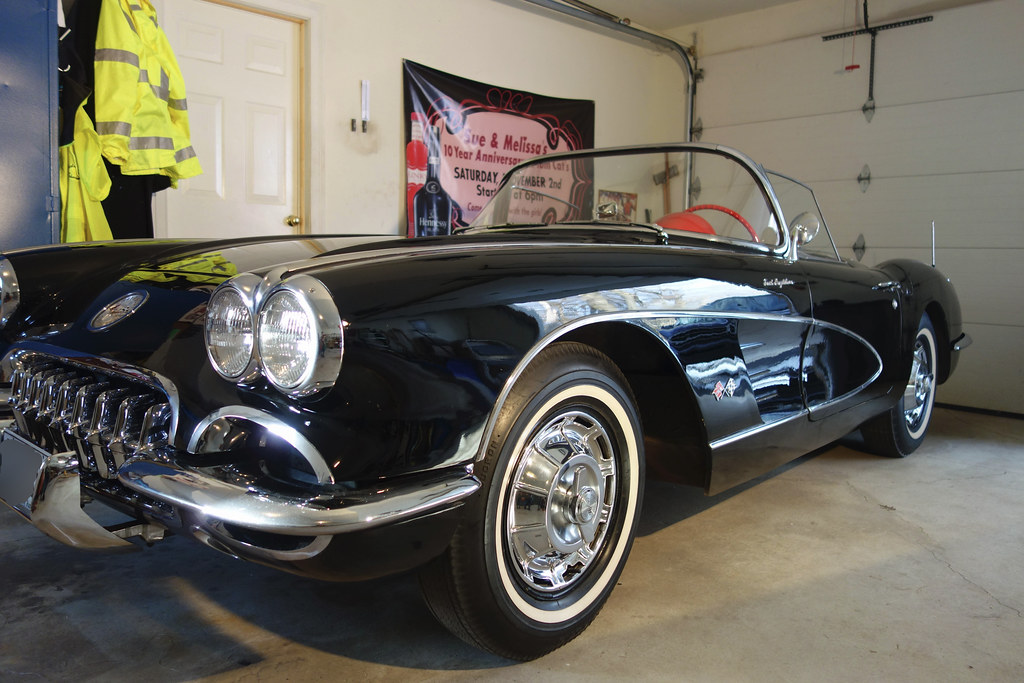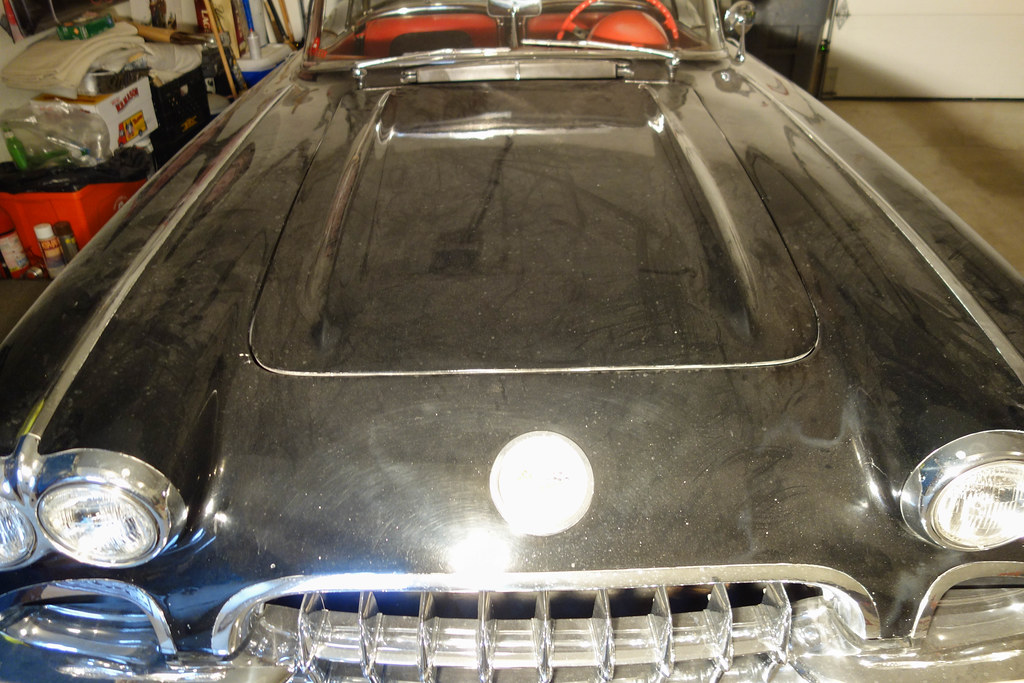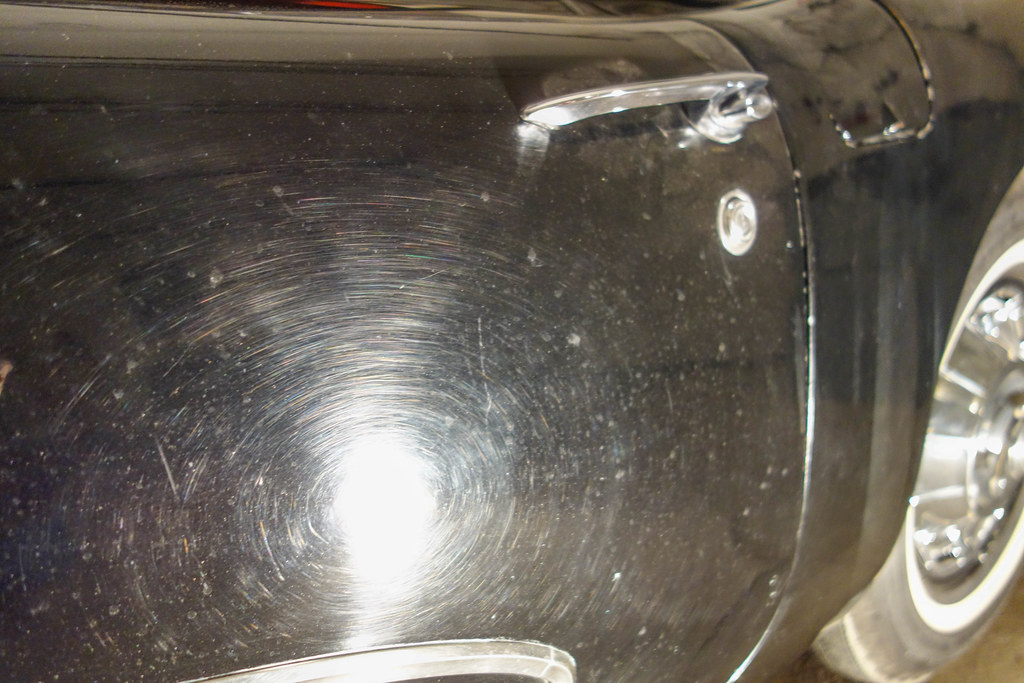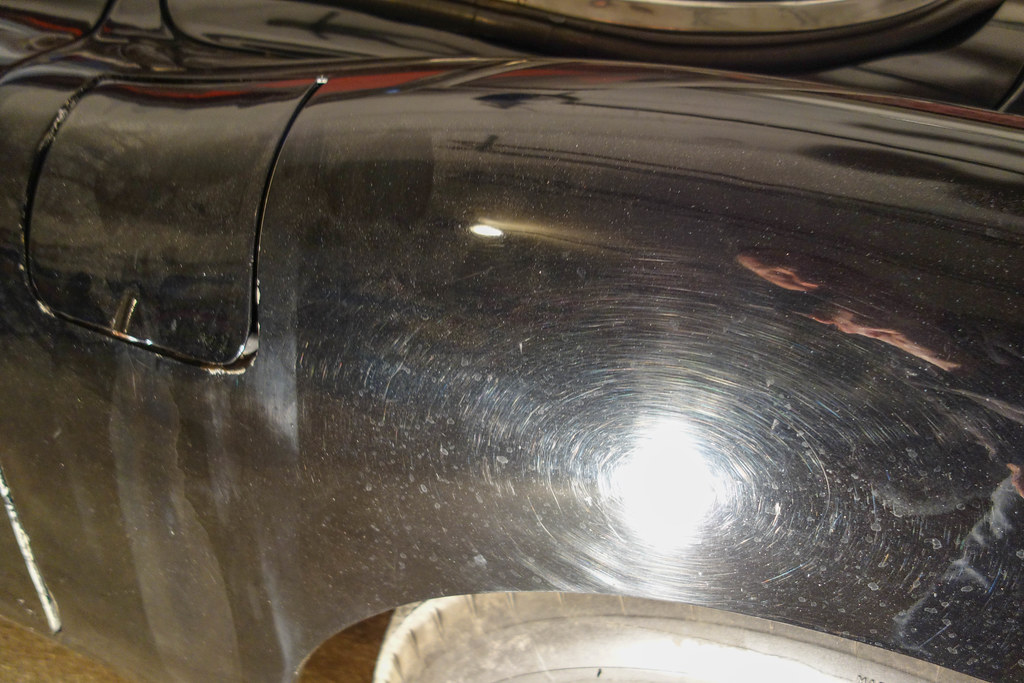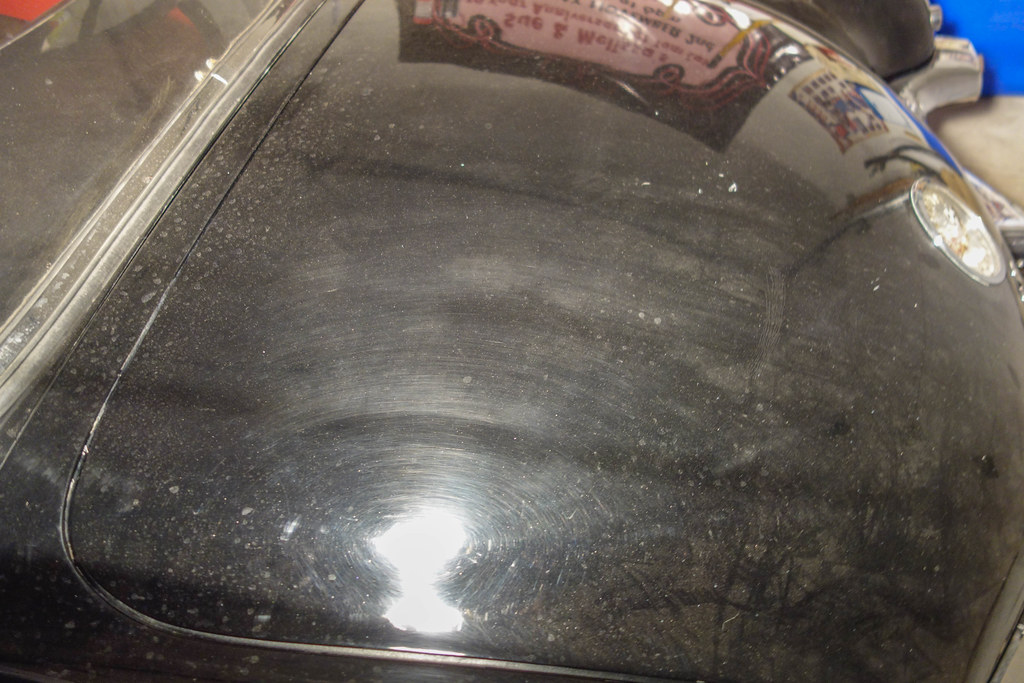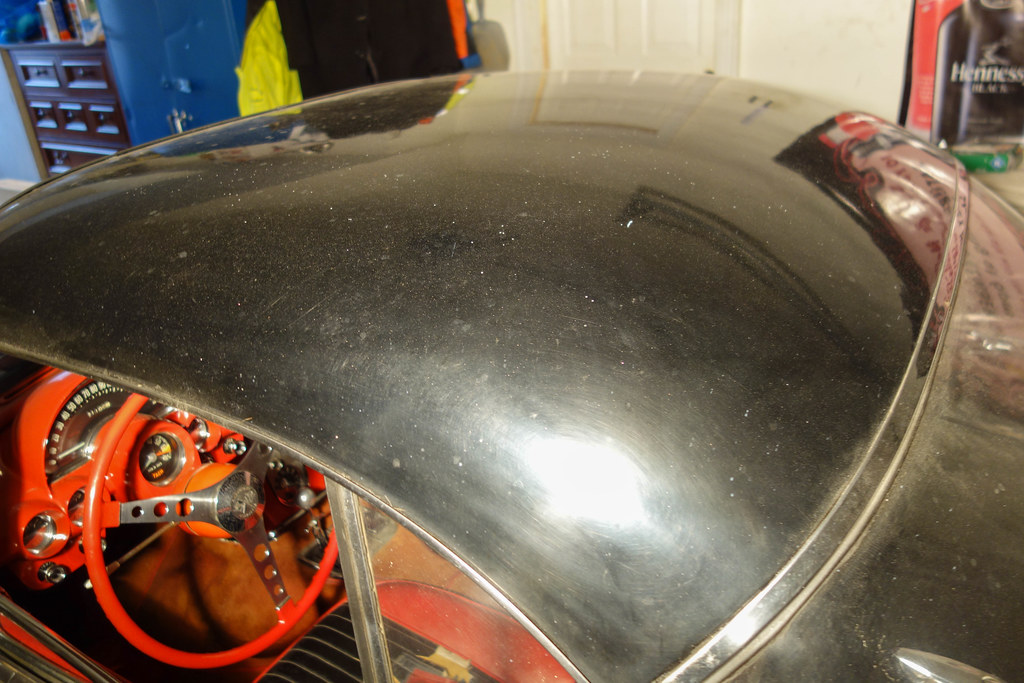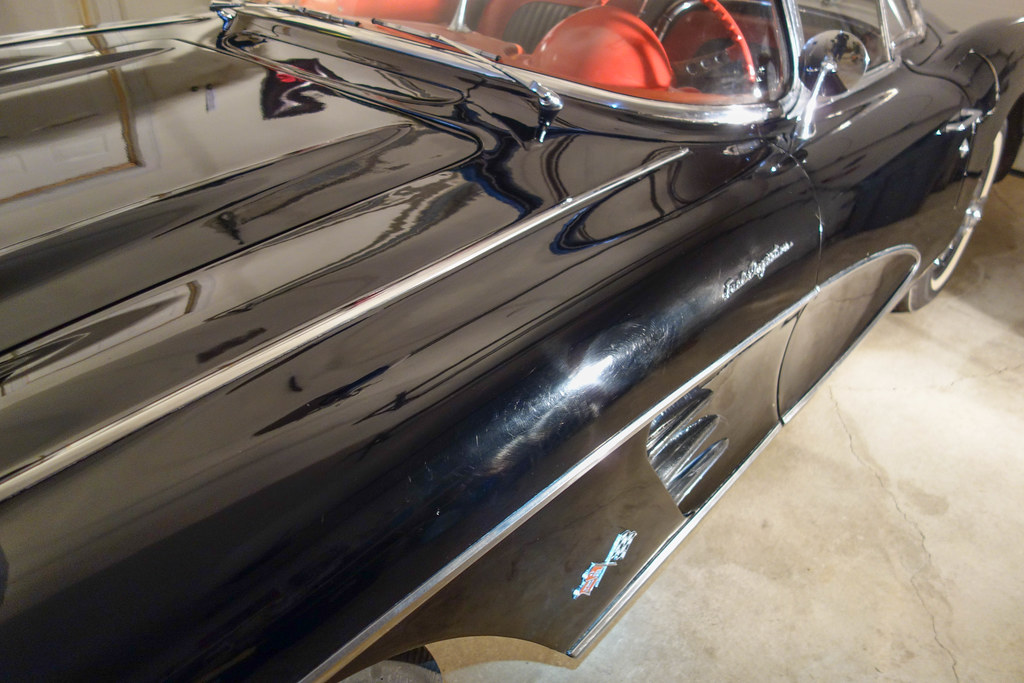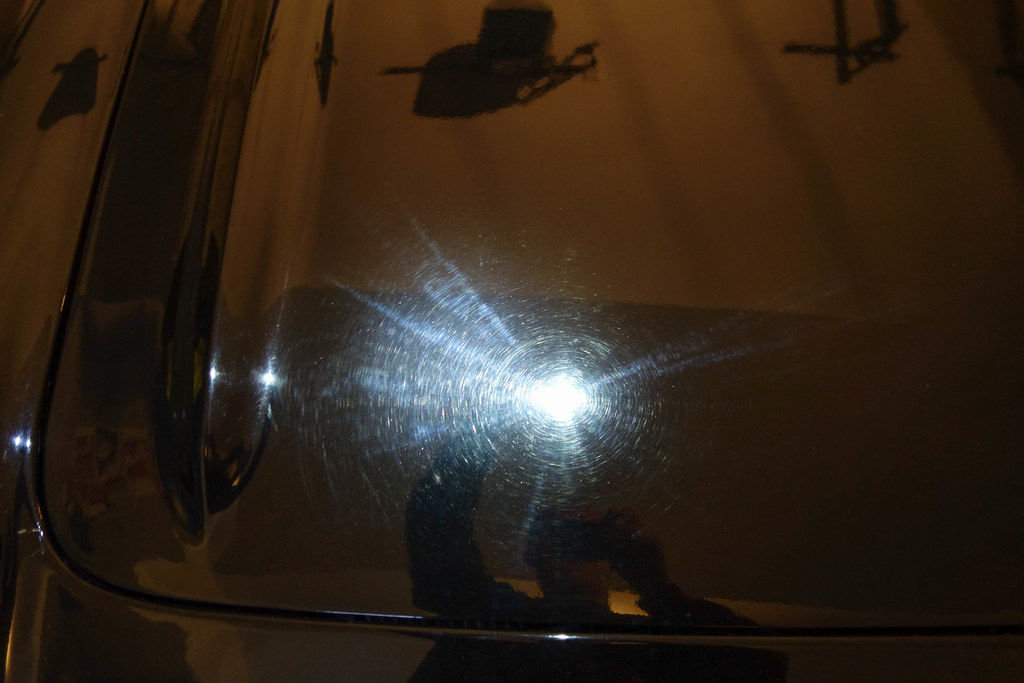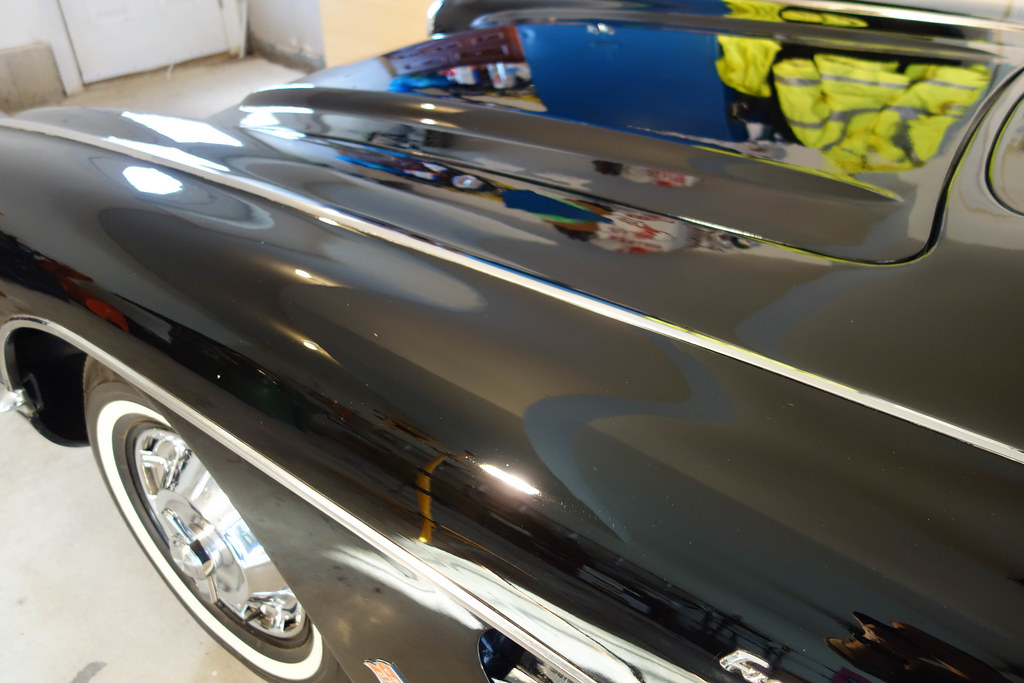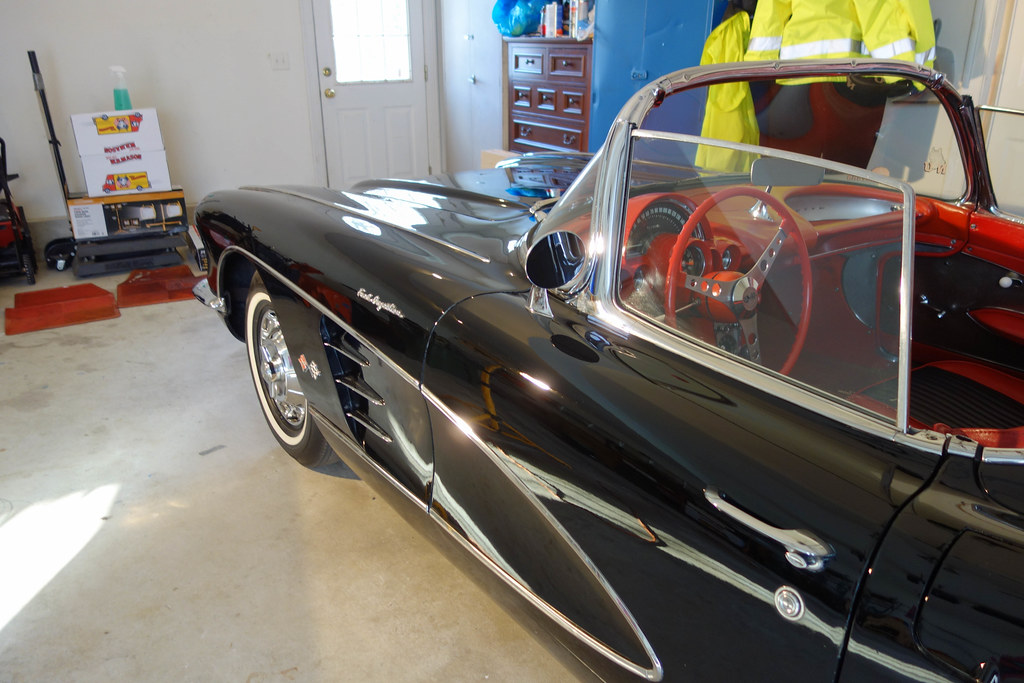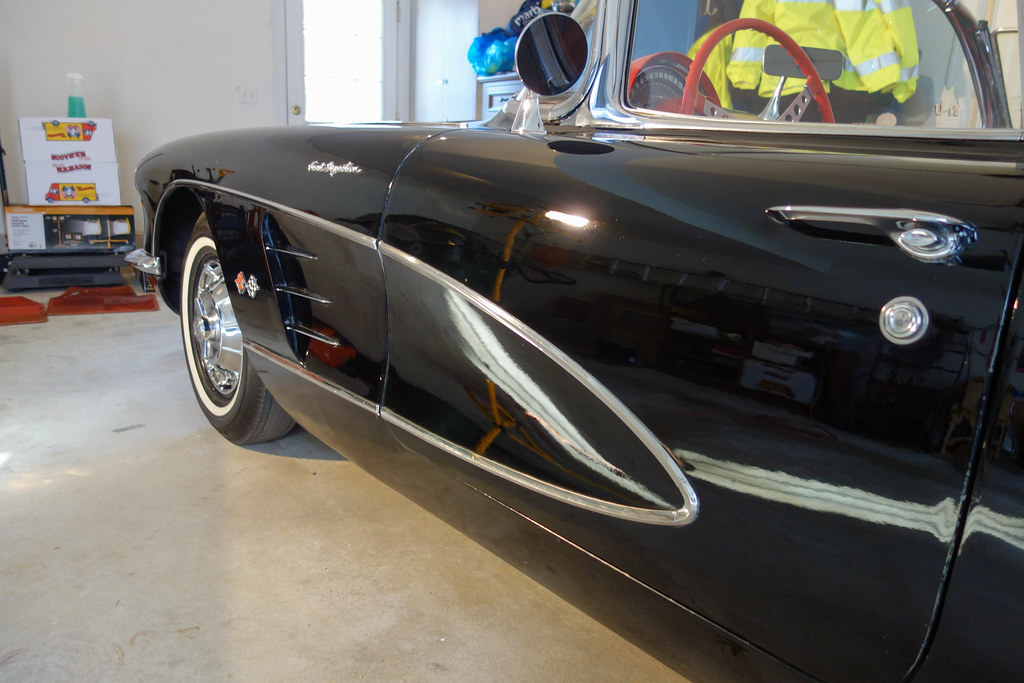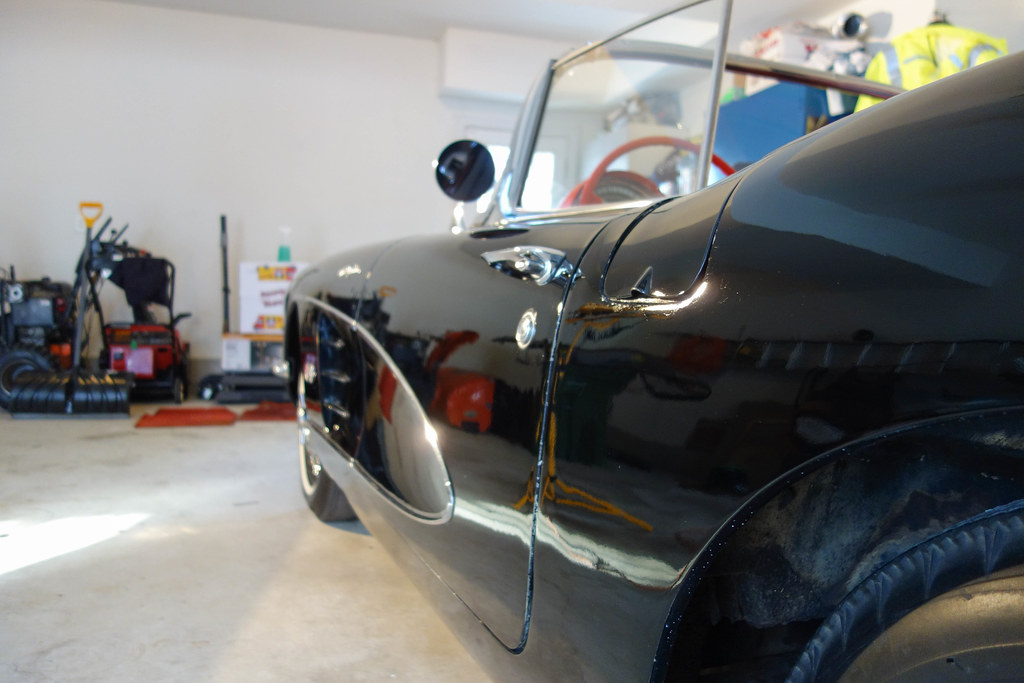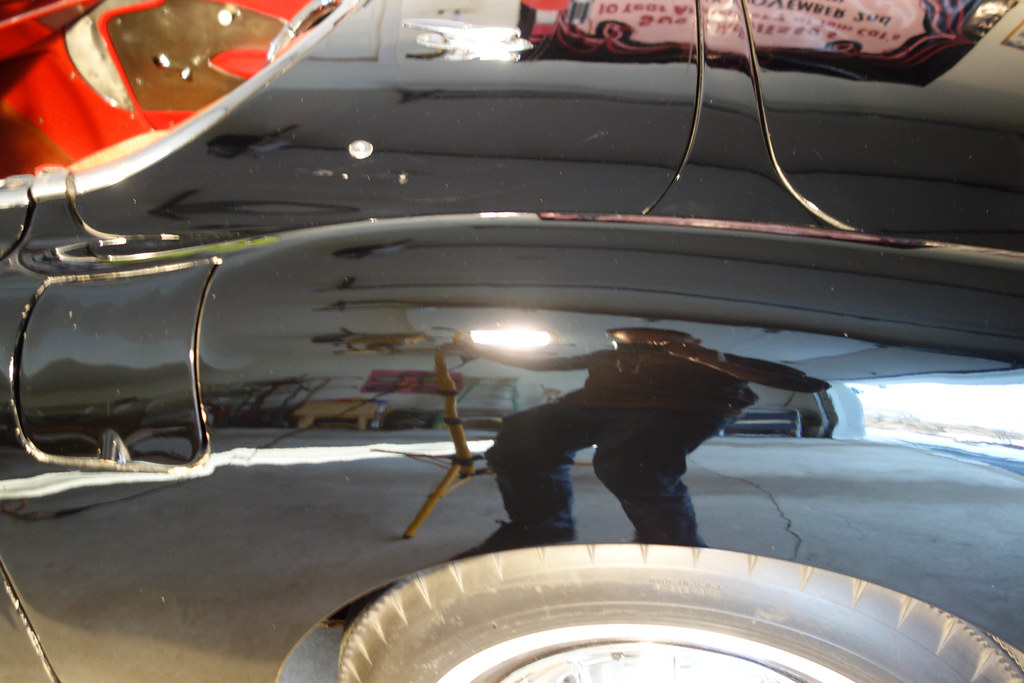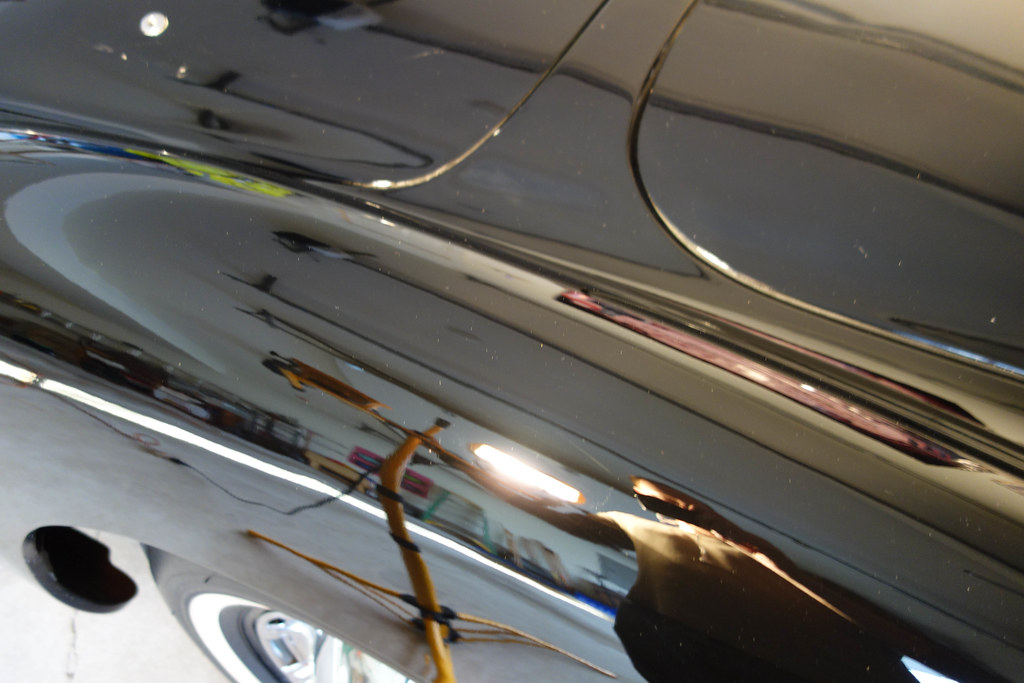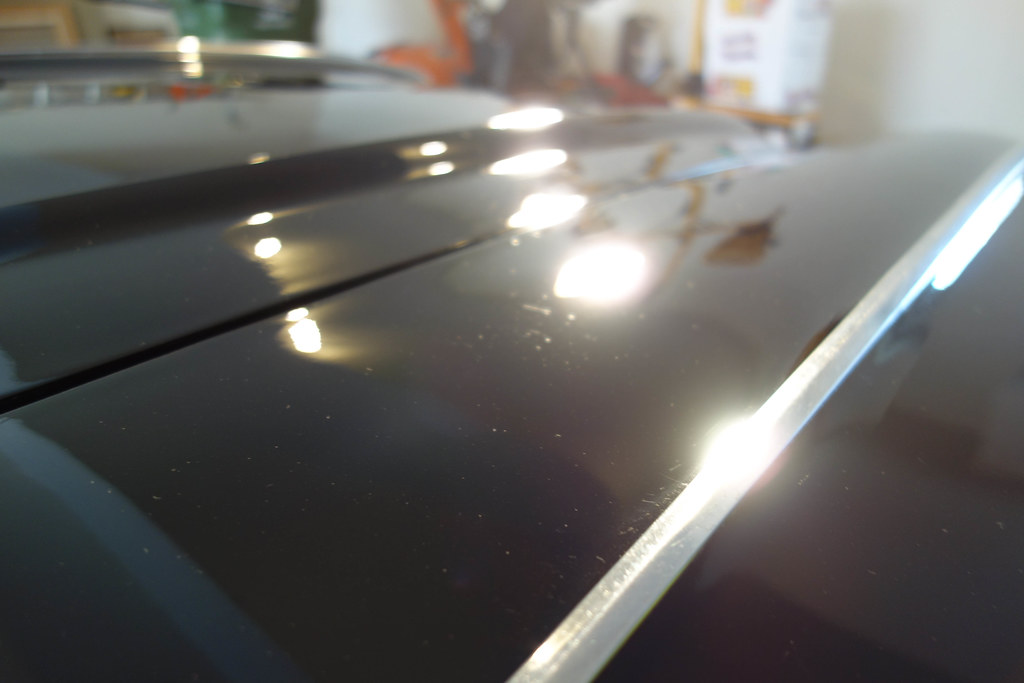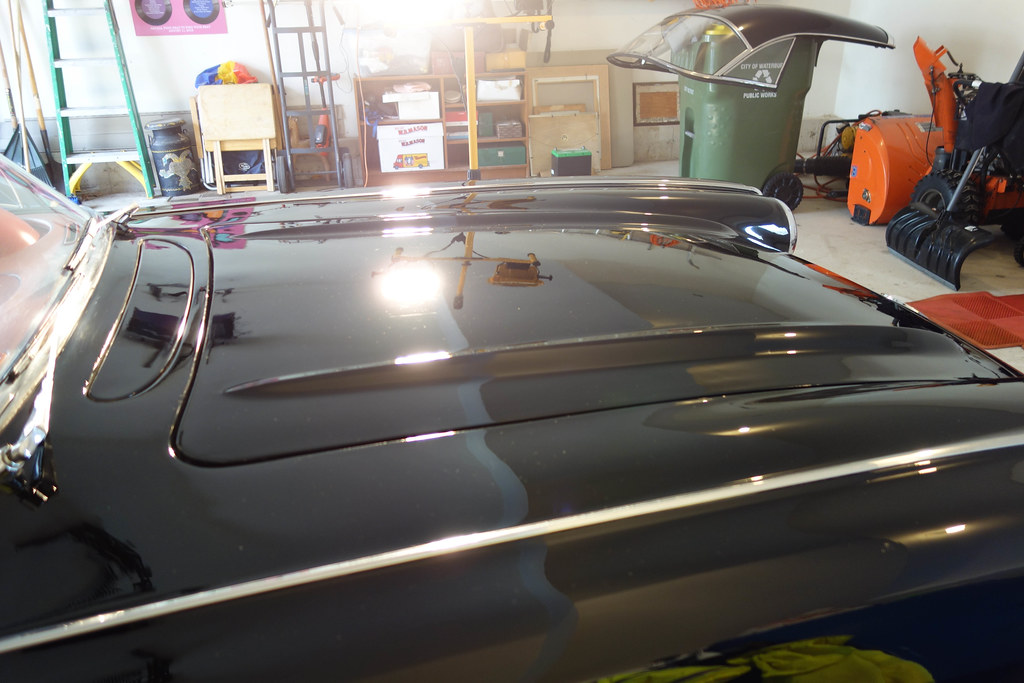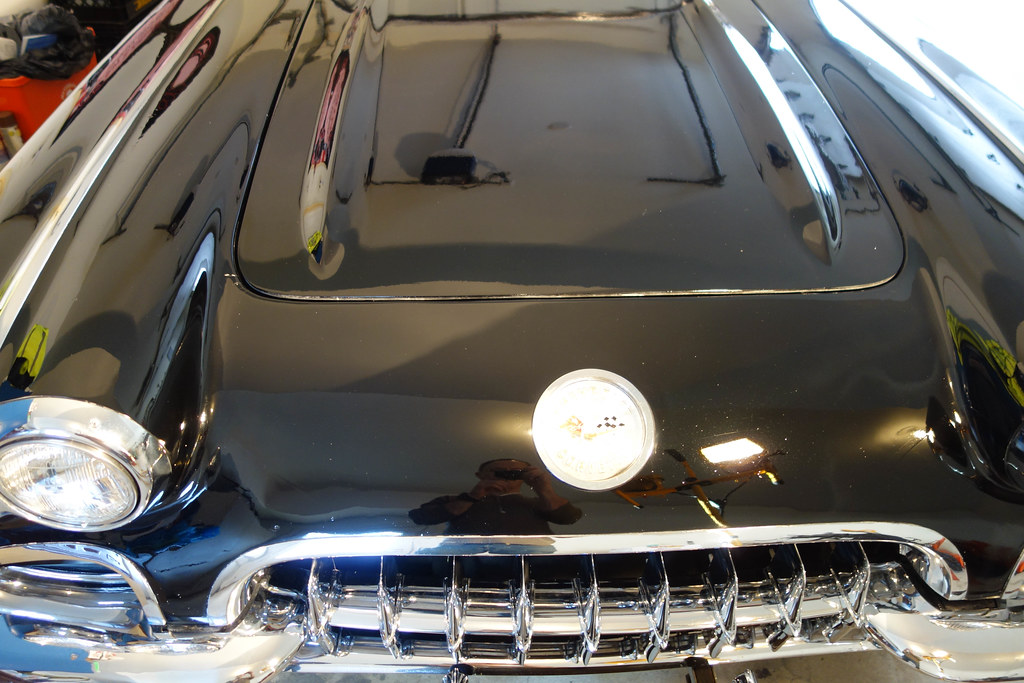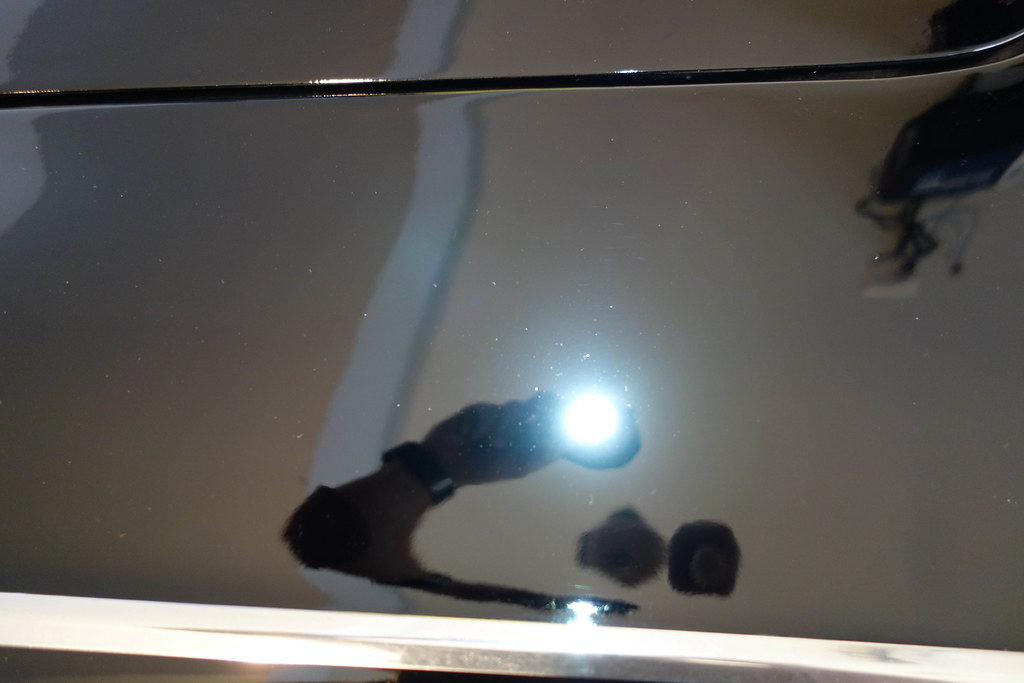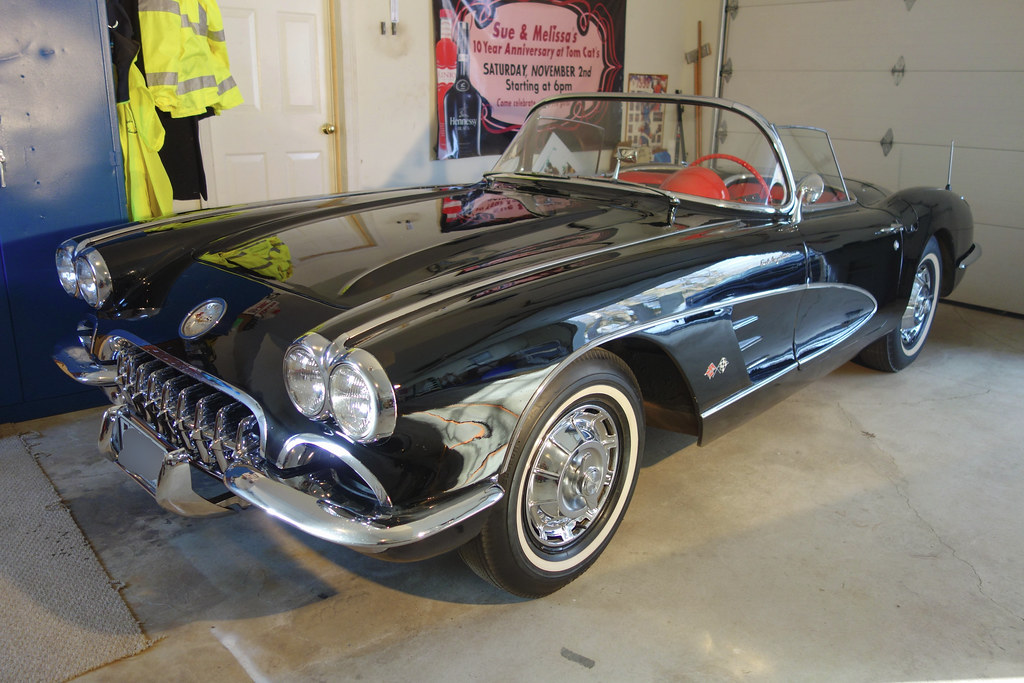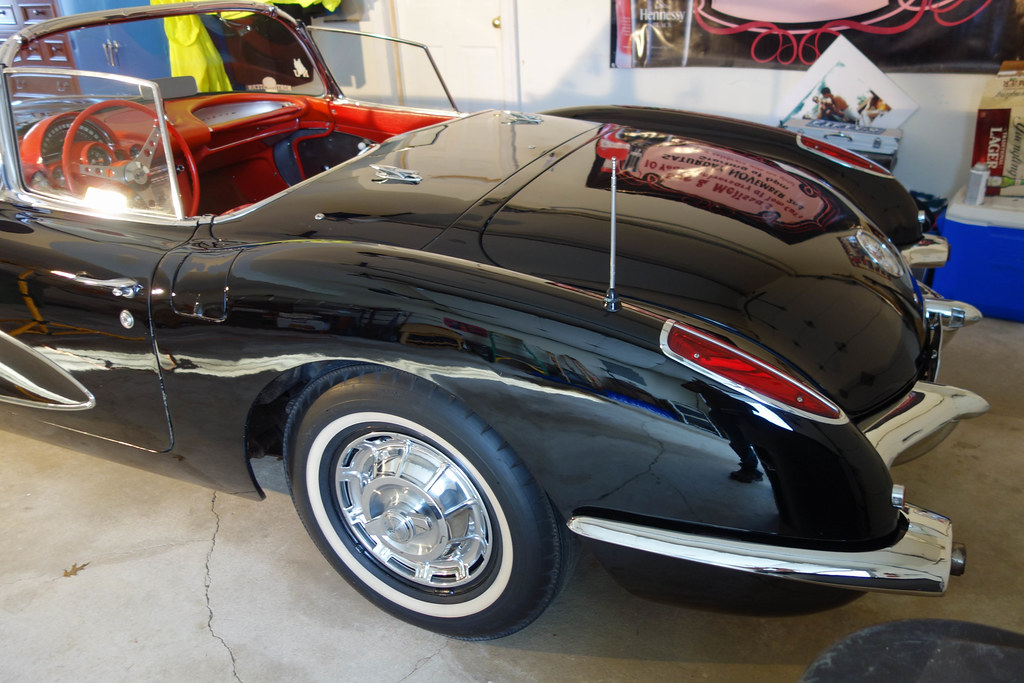The owner of this 1959 Corvette had been in possession of it for over forty years, keeping it stashed in various garages, taking it out rarely on special occasions and driving it a mere thousand miles during that time. Over the years he had cleaned the car and occasionally waxed it, but never polished it or had any sort of professional detailing done. As can be expected, the finish was in serious need of paint correction when it was brought to our attention. The paintwork showed signs of past over-buffing (burned edges), thin spots and some checking of the finish on the passenger side, so our goal was to get the paint looking presentable while taking a cautious approach on the deteriorated areas, and overall preserving as much paint thickness as possible.
Before beginning work:
After careful cleaning of the paintwork with Poorboys World Spray & Wipe waterless wash, we applied a thick coat of Meguiar’s #7 Showcar Glaze, a product which would restore oils to the single stage paint, making it less brittle and easier to work with while also preserving the finish post-correction. As you can see, some of the paint’s luster was restored at this early stage, though the marring was still quite evident:
At this point it was necessary to assess our options for paint correction. As mentioned earlier, this paintwork had been over-polished in a few areas in decades past and was showing other signs of deterioration, so our initial plan was for a one-step correction yielding 70–80% defect removal. After trying many different polish and pad compounds it became clear that a one-step would at best remove half of the paint’s defects, yielding a finish that was clearly lacking even at a quick glance under bright lighting. Moving on to testing our two-step correction options, we settled on a combination of Meguiar’s microfiber cutting pads with a mixture of Meguiar’s D300 compound and HD Polish, providing moderate cutting ability with relatively little micromarring left behind. To remove this micromarring we followed with HD Polish on Lake Country black foam finishing pads. All polishing was performed with the Rupes 21 mk.II, 75E and Ibrid Nano long-stroke dual action polishers. Following this, the paintwork would be protected by CarPro’s Reload silica sealant.
After:
